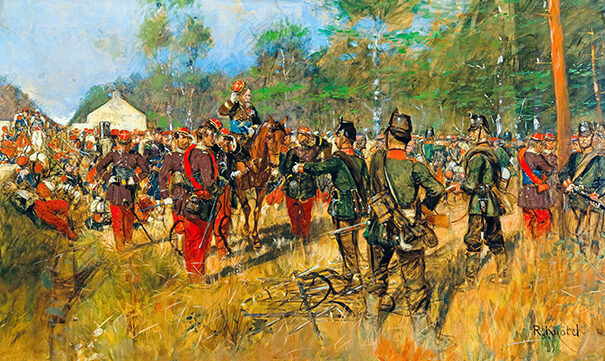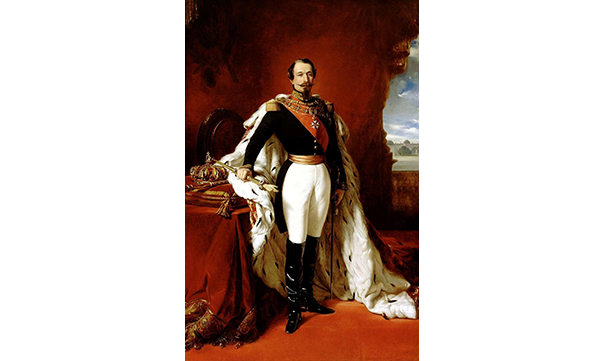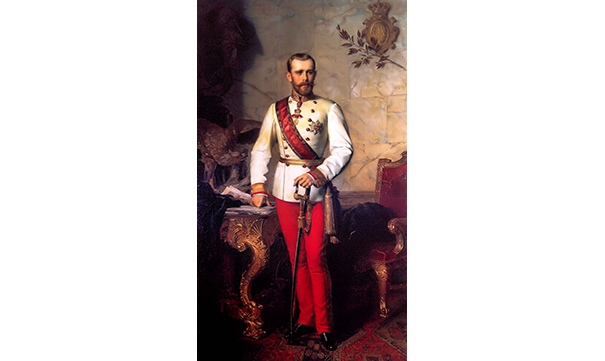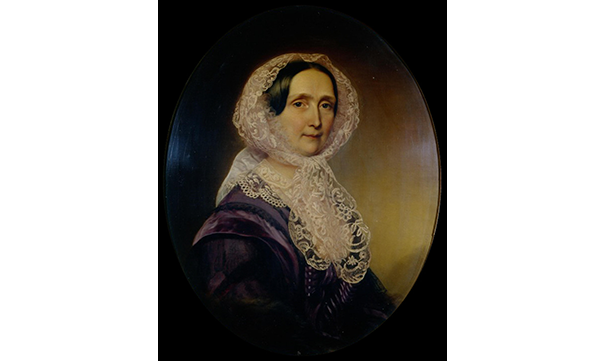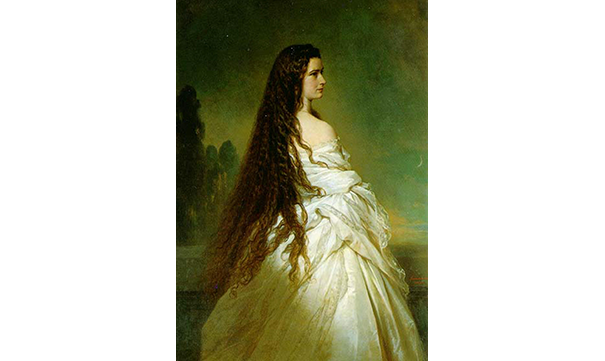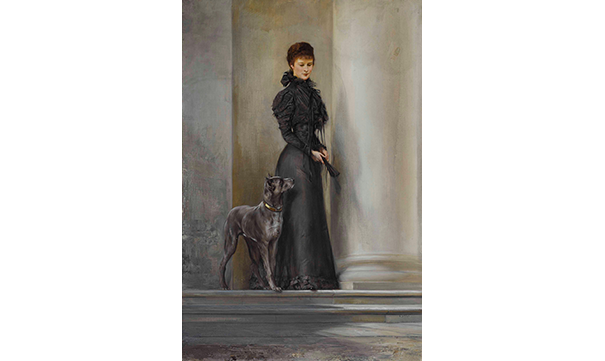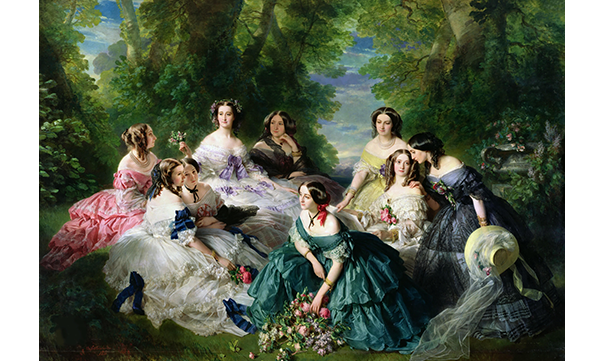The thrilling chronicle of two of the most influential and glamorous women in 19th-century Europe—and their efforts to rule amid the scandal, intrigue, tragedy, and violence of their era.
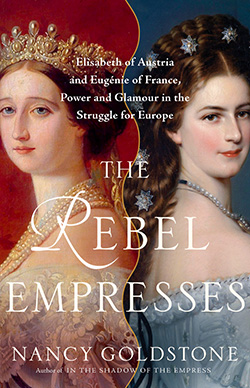
When they married Emperor Franz Joseph and Napoleon III, respectively, Elisabeth of Austria—more familiarly known as Sisi—and Eugénie of France became two of the most famous women of their time. Young and beautiful, each represented, in her way, a new kind of empress—one who rebelled against traditional expectations and restrictions.
Yet both women endured hardship in their private and public lives. Free-spirited Elisabeth was plagued by a mother-in-law who snatched her infant children away and undermined her authority at court. Fearless Eugénie was married to an infamous philanderer who could not match the military prowess of his namesake. Between them, both women were personally involved in every major international confrontation in their turbulent century, which witnessed thrilling technological advances as well as revolutions, assassinations, and wars.
Filled with passion and poetry, humor and pathos, The Rebel Empresses brings to life the story of these two fascinating women and the wildly entertaining century in which they reigned.
Bookshop.org Amazon Apple Audible Barnes & Noble Books-A-Million Kobo Amazon UKListen to Nancy on the What’sHerName podcast discussing “Sisi: The Reluctant Empress”:
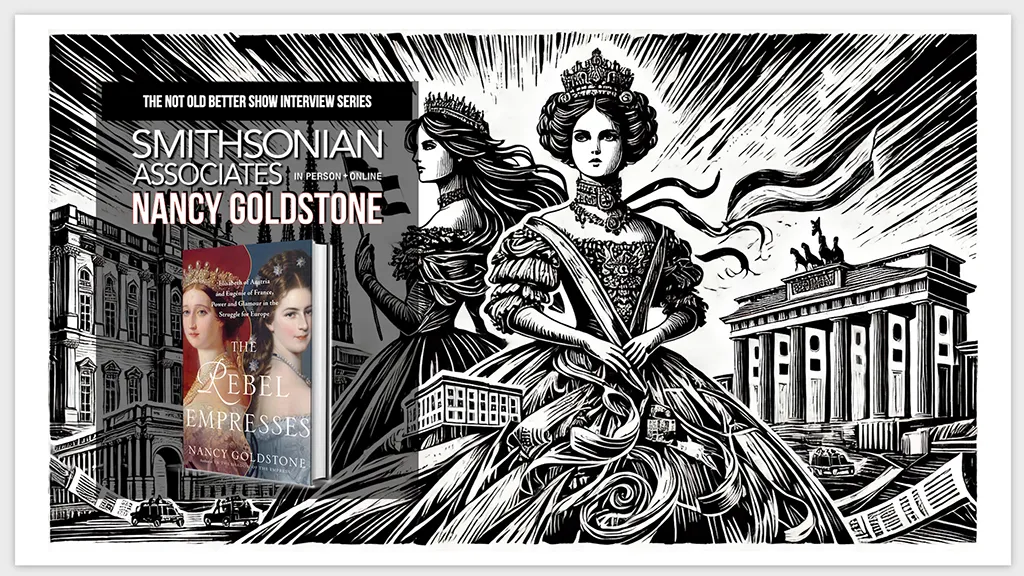
Listen to Nancy on the Not Old Better Show, Smithsonian Associates Interview series
Praise for The Rebel Empresses:
“Nancy Goldstone, in The Rebel Empresses, has written a dual biography of two women at center stage—the glamorous consorts of Napoleon III and Franz Joseph. The author darts between the women in alternating chapters, covering nearly a century and delivering her complex material in a lively, opinionated tone…Personal catastrophe and imperial history are deftly interlaced in these parallel lives; Ms. Goldstone has painted a bold portrait of two bold women caught in the tempests of history.”
—Catherine Ostler, The Wall Street Journal
“Both women, in Goldstone’s vibrant, wryly witty portraits, emerges as glamorous, strong-willed, and independent…In a brisk, lively narrative, Goldstone seamlessly interweaves the women’s trials, challenges, and betrayals with the world events that swirled incessantly around them. A richly detailed, entertaining dual biography.”
—Kirkus Reviews (STARRED)
“Wounded by their husbands’ infidelity and shattered by the deaths of their only sons, Elisabeth of Austria and Eugénie of France defied court protocol in a bid for independence…each stood up for herself in an era when women tended not to.”
—Anne de Courcy, The Spectator UK
“This eye-opening dual biography introduced us to two 19th-century royal women who bucked society’s rules to forge their own paths….it’s a sensory treat, too, as Goldstone sets her scenes with an arresting writing style that transports us to the book’s glamorous settings, from rococo French palaces to the shimmering seas of Corfu. If you’re interested in the maverick women from history whose stories often go untold, look no further.”
—Apple Books, A Best Book of the Month
“In this witty and astute account, historian Goldstone presents the turbulent and politically entwined lives of Elisabeth of Austria and Eugénie of France. With their beauty and fashion sense, both became popular figures in the 19th century; thanks to their intelligence and grasp of statecraft, each also became instrumental in the development of their countries… With brio, Goldstone alternates between her subjects’ eventful life stories, which include a cursed diamond, a suicide pact, and a bevy of anarchists, fashion designers, and royals. It’s an illuminating and thoroughly enjoyable view of the highborn milieu at the center of a period of rapid modernization.”
—Publishers Weekly (STARRED)
“Fascinating insight into the lives of two remarkable women…Goldstone’s wry commentary enhances the narrative.”
—Library Journal
“Goldstone’s sprawling chronology illustrates the influence the two imperial women had on the course of history at a time when traditional royal pageantry belied a modernizing world.”
—Washington Post
“Empress Elisabeth is already the subject of a number of television shows and novels… but Nancy Goldstone may have penned the definitive non-fiction account of the storied figurehead, as well as her French counterpart.”
—San Diego Tribune
“In her latest investigation of remarkable women, Goldstone portrays the mid-19th-century empresses Elisabeth of Austria and Eugénie of France, celebrities of the Victorian era. Balancing historical context with private details, her book—set against some of the most scandalous and pivotal moments in European history—presents these rulers as modern women who rejected tradition and championed progressive causes.”
—Alta Magazine
A Conversation with Nancy Goldstone
How did you come to write this book?
I remember exactly when the first glimmer of the idea for Rebel Empresses came to me. It was years ago, and my husband and I were in Prague, where I had come to research the life of Elizabeth Stuart for my book Daughters of the Winter Queen. Larry and I had spent the morning touring the interior of the old castle and were outside walking down a narrow alleyway where various artisans, guardsmen, and other servants attached to the court had once lived. On this street was a bookstore, so naturally we went in.
Most of the titles were in Czech or German but there was also a small English-language section. The second I stood in front of it, I stopped dead in my tracks. There, face out on one of the shelves, was a book with a full-length cover portrait of a stunningly beautiful young woman. She had diamond stars cascading through her elaborately styled hair and was wearing the sort of gown commonly associated with fairy princesses. Who is THAT? I asked myself. Can this possibly be the portrait of a real person?
That was my first introduction to Sisi. I bought the book—you wouldn’t have been able to pry it away from me—and discovered that, not only was the woman on the cover a real person, she had actually ruled in the nineteenth century as empress of Austria. Think of the coincidence! Right up my wheelhouse! It was almost as if I was fated to write about her.
And Eugénie? What brought her to your attention?
Eugénie announced herself while I was writing In the Shadow of the Empress, about the great Maria Theresa and three of her daughters, one of whom was Marie Antoinette. The story of the doomed queen’s reign and its aftermath was so gripping—the Revolution, the Terror, the rise and fall of Napoleon!—that I itched to find a female French sovereign to follow into the next century. I started poking around and almost immediately hit the jackpot with Eugénie, who ruled with her husband, Napoloen III, during the Second Empire. Eugénie’s narrative, already highly compelling on its own, complemented Sisi’s so well that the two of them might have been a pair of gloves. Each was involved in every major event of the second half of the nineteenth century (mostly from opposite sides) and both were celebrated in the press for their beauty, elaborate coiffures, and Charles Worth evening gowns. You can’t beat that! And there was even Napoleon III for comic relief.
You’ve written about powerful, overlooked women in every period from the 13th century on. How does the 19th century compare as a backdrop?
I confess that after I finished In the Shadow of the Empress, which was set in the eighteenth century, I doubted I would ever find a story as thrilling—or as entertaining. Boy, was I ever wrong! There are so many intrigues, twists, and double-crosses in Rebel Empresses that the narrative resembles a Guy Ritchie film. And the characters are every bit as engaging as any I’ve encountered in the past. Both empresses won my heart with their courage and complexities, and if you’re in the market for a wise-cracking evil genius, please allow me to introduce you to Otto von Bismarck. I’ve got distinguished poets and famous novelists, haute couture and hairdressers, notorious courtesans, scandalous love affairs, a suicide pact, a cursed diamond, a mad king, a valiant American dentist, and one seriously controlling mother-in-law. History just doesn’t get better than this.
How do the lives of Elisabeth and Eugénie compare to those of the women who ruled in your previous books?
What I found so arresting about Elisabeth and Eugénie was how relatable they both are to contemporary audiences, how seamlessly they would fit into the world today. Each chafed in her own way at the restrictions put on women. This is the first time in all the centuries I have researched that I have encountered such a recognizably modern attitude, and I have to say I LOVED it! Eugénie advocated for female educational and career advancement, insisted that women artists and writers receive credit and honors equal to that of their male counterparts, and tried to establish a network of like-minded sister sovereigns to help promote her policies. Sisi’s rebellion was more personal and for this reason perhaps even more provocative. She rejected traditional societal views of marriage, of the barriers to individuality, and of long-assumed orthodoxies about the sacrifices and life choices imposed on an empress to satisfy her subjects.
But I think what surprised me most in all of this was the critical role athletics played in each woman’s development. Both empresses were raised with an emphasis on exercise. Elisabeth was a phenomenon who pushed her body to the limit until time and injury caught up with her. Eugénie, while not at Sisi’s level, rode, swam, sailed, and hiked well into middle age. The criticisms endured in particular by Elisabeth, who was ridiculed and disdained for refusing to give up her physicality, give a sense of the obstacles women faced even in fulfillment of so fundamental an aspect of human nature as the drive to compete athletically.
Was there anything else that surprised you in this book?
Yes! How much the societies Elisabeth and Eugénie inhabited resembled ours today. From Napoleon III’s “Make France Great Again” slogans to the cult of celebrity that grew up around Sisi, a modern audience will recognize our world in theirs. The skirts may be longer and fuller, the photography a little grainier, and communication not quite so instantaneous as we may be used to, but it is still definitely possible to see the seeds of the twenty-first century, both for good and ill, take root in the nineteenth.

